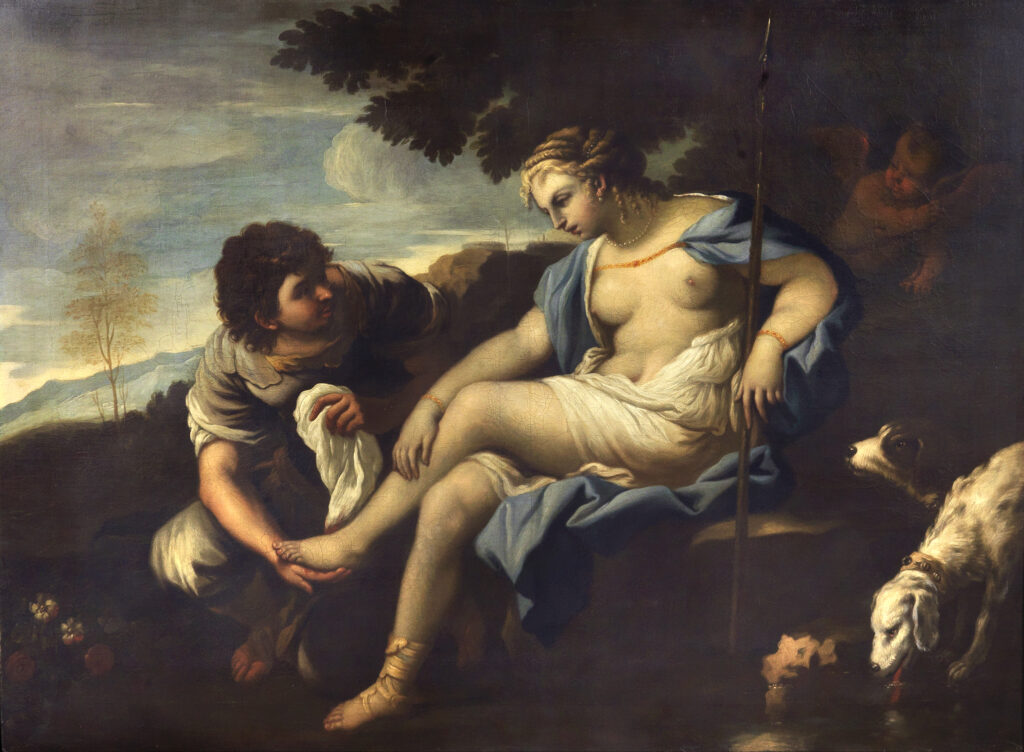LUCA GIORDANO, ATTRIBUITO A
Naples, 1634 – 1705
The Meeting of Venus and Adonis
oil on canvas, cm 152×207
The large painting presented here, attributed to Luca Giordano, depicts the mythological encounter between Adonis and Venus. The scene is dominated by the central figures, set in a natural landscape: Venus, half-naked and wrapped in a blue drape, is gently caressed on the foot by Adonis, kneeling beside her. Symbolic details such as a dog, symbol of fidelity and hunting, and a winged cupid watching from the half-light, enrich the scene. The serene and idyllic landscape with trees and hills is typical of Baroque depictions, with soft light and warm colours conferring intimacy and gentleness.
The work can be attributed to Luca Giordano, a famous 17th-century painter and leading figure in Italy and Europe. This painting reflects the artistic influence that Tintoretto’s painting had on our artist during his stay in Venice.
The subject of the painting is of considerable interest. Initially identified as Diana and Actaeon, closer examination revealed that it depicts the encounter between Venus and Adonis described in Canto III of the Baroque writer Giambattista Marino’s Adonis. In this poem, Venus, disguised as Diana, wounds her foot with a rose, turning white roses pink and red. She finds Adonis asleep, and when he wakes up, he bandages her wound with a cloth. Cupid, who seems to be moving away in the top left-hand corner of the painting, reappears as Adonis takes Venus’ wounded foot in his hands.
In the 17th century, no other Italian paintings inspired by Marino’s Adonis are known, except for a frieze by Filippo Zaniberti (Brescia, 1585–1636), now lost, which decorated the Camera Loredan in San Stefano, Venice. It is likely that the fame of that work influenced the choice of subject for this painting and that our work was one of the paintings by Giordano and his circle, recorded in the inventories of Venetian palaces of the time.


